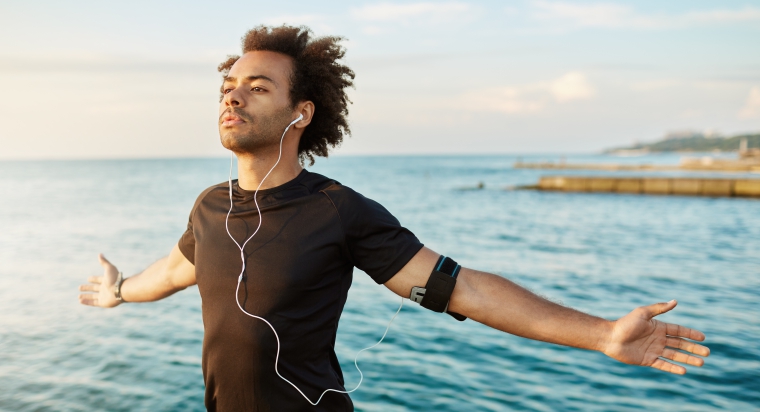Breathing Techniques For Better Breathing
Breathing is an intricate human activity that takes place when the diaphragm and external intercostal muscles contract, thus providing enough room within the chest, which allows the lungs to get filled with air.
However, some people may experience difficulty breathing, probably due to harmful habits like smoking or some diseases that affect the lungs. Nevertheless, some breathing methods can help you handle trouble breathing. Below are some simple yet effective breathing techniques that you can explore.
Proven Breathing Techniques
- Diaphragm breathing
Performing the diaphragm breathing technique is quite simple and effective when done correctly.
To perform diaphragm breathing, follow the steps below;
- Place your hands lightly on the belly.
- Breathe in through the nose until the belly swells.
- Breathe out through the mouth for twice the length of time.
You must ensure that the neck and shoulders are relaxed during this breathing technique because the diaphragm will carry more workload during breathing. The diaphragm technique is best employed while the individual is lying down to make it easier to be conscious of the rise and decline of the belly.
The diaphragm technique, when performed correctly, can help deal with stress and anxiety. It can help handle symptoms of lung conditions, strengthen the lungs and help them function better.
- Deep breathing
The deep breathing technique is a popular method that can be used to deal with stress, and anxiety and also make you feel calmer. All you need to do is take a long, full breath, and you’ll feel less anxious and more relaxed.
To perform the profound breathing challenge;
- Sit in a comfortable posture and intentionally relax your shoulders.
- Fill your lungs by inhaling very slowly.
- Perform a reverse procedure by emptying your lungs via exhalation.
- Box breathing
Here’s how to perform the box breathing technique;
- Under the count of four, breathe in through your nose and your lungs.
- Hold your breath for the count of four.
- Slowly breathe out through your mouth under the count of four, thereby emptying the lungs.
- Count to four again before breathing out.
For better results, ensure that the person performing the breathing technique sits upright in a chair while resting the palms on their lap or knees to make breathing in and out more accessible.
Most folks employ the box breathing technique to improve mental concentration and handle stress.
- Pursed lip breathing
The pursed-lip breathing technique is commonly used in treating lung diseases like Asthma and chronic obstructive pulmonary disease (COPD) or used as part of the procedures for pulmonary rehabilitation. COPDs usually deplete the strength of your lungs, and it is harder for them to get rid of stale air ultimately, thus making it difficult for the diaphragm to work correctly.
However, using the above technique, the diaphragm can be kept working, and the quantity of oxygen entering the body can be held at a steady increase rate.
To engage the pursed-lip breathing technique;
- Breathe in through the nose.
- Breathe out through the mouth with pursed lips.
- Breathe out for as twice as the longer the time when you breathed in.
- Alternate nostril breathing.
As a standard part of yoga exercises, alternate nostril breathing is said to help deal with stress and anxiety. It can also be used to slow down breath speed or keep it at an even pace.
An individual can perform the alternate nostril breathing method by doing the following.
- Sit in a relaxed position, on the floor or in a chair.
- Close your right nostril with the thumb of one hand.
- Breathe in through your left nostril.
- Close your left nostril with the fourth finger and release your thumb.
- Breathe out through your right nostril.
- Breathe in through your right nostril.
- Close your right nostril with the thumb and release the fourth finger.
- Breathe out through your left nostril.
- Lion’s breathing
The lion’s breathing, when exercised properly, can help handle tension, anxiety, and stress and cause your muscles to relax.
You can also use Lion’s breathing technique to stimulate your diaphragm and vocal cords too.
- Sit in a comfortable position.
- Slightly lean forward while bracing your hands on your knees or the floor.
- As wide as possible, spread your fingers.
- Breathe in through your nose.
- Open your mouth widely, stick out your tongue, and stretch it toward your chin.
- Breathe out forcefully while carrying the breath across the root of your tongue.
- Breathe freely for a few minutes, repeat the technique, and breathe deeply for at least 3 minutes.
Conclusion
Breathing exercises can be very effective in helping you relieve symptoms of pulmonary diseases and other lung-related complications, but they cannot cure the diseases. If you happen to be struggling with chronic obstructive pulmonary disease or any other lung illness, do not hesitate to find a lung doctor or health center to help you with your challenge.



 Translate
Translate

